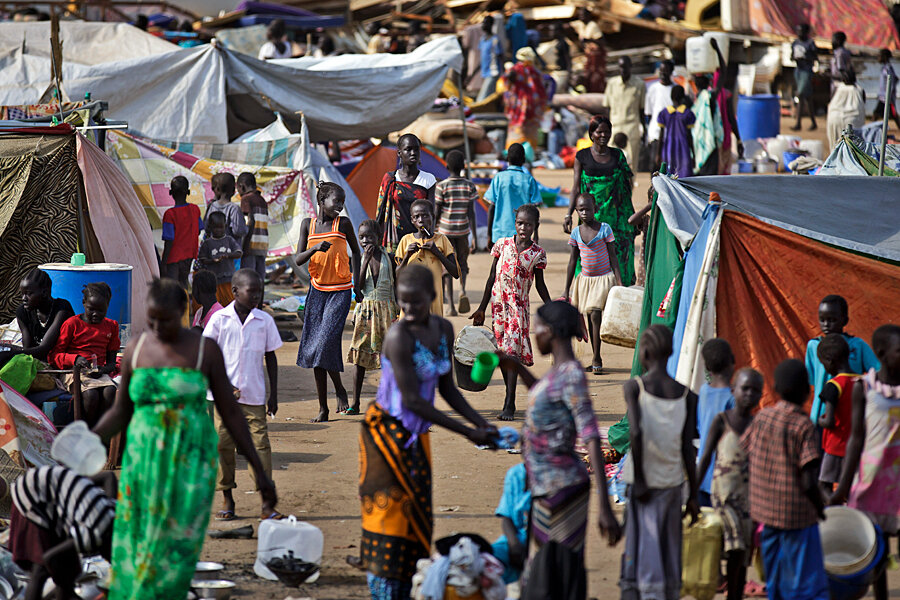Aid to Africa: Better to bypass NGOs and give directly?
Loading...
A version of this post originally appeared on the View from the Cave and the Brookings site. The views expressed are the author's own.
A results-oriented aid agenda for Africa has picked up steam in the past few years.
Last year closed with excitement about cash transfers. Researchers in Western Kenya found that just giving people money was an effective form of assistance. As the MIT report notes, GiveDirectly recipients increased household asset holdings by 58 percent compared to the mean control group, and did not increase spending on tobacco or alcohol.
Thus, the once cast-aside form of aid is making a comeback on the strength of evidence and research. GiveDirectly is only the tipping point for a new way of thinking about aid in Africa and elsewhere.
An era of evidence-based aid is here. GiveDirectly is a new standard because it has proof that evidence-based aid works and what it can actually accomplish. Nongovernmental organizations (NGOs) have often talked about the potential of a given intervention and tell the stories of the people who benefited. Now they will have to talk about evidence. Donors want to know whether a project works and what is actually achieved.
The charity evaluator, GiveWell, gives charity recommendations based on cost-effectiveness and whether there is proof that what is being done has an impact. It has analyzed 136 charities and has recommended only four: GiveDirectly, Deworm the World, the Against Malaria Foundation and the Schistosomiasis Control Initiative.
GiveWell is not alone. AidGrade is employing meta-analyses of existing research to learn what different programs actually accomplish. Users can see how effective interventions are at achieving a given target (i.e., increasing school attendance, eliminating stunting, or creating business profit) and donate to an organization that is effective at creating such impacts.
GiveWell's recommended charities are listed there, as well as the microfinance organization Kiva and the clean energy organization the Global Village Energy Partnership.
The organization Giving What We Can encourages young people to give 10 percent of their annual income to effective charities. Its list of recommended charities is nearly identical to that of GiveWell.
Giving What We Can was founded by Toby Ord who was influenced by Princeton philosopher Peter Singer. Known best for his case for the moral obligation to help a person no matter where he or she may be in the world, Mr. Singer champions what he calls “effective altruism.”
“[Effective altruism] is important because it combines both the heart and the head. The heart, of course, you felt. You felt the empathy for that child. But it's really important to use the head as well to make sure that what you do is effective and well-directed,” explained Singer in a TED talk about effective altruism.
Effective aid is growing in importance because, aside from the UK, major donors are decreasing their foreign assistance. At the same time, just about every advocate for a social issue -- whether AIDS, education, or child marriage -- says that more money is needed.
Given the financial constraints, effectiveness is paramount. The aid buzz word “sustainable” has been casually tossed about for years with little actual meaning. That is changing thanks to a budding movement to figure out whether or not an intervention works.
Building a well in the middle of a village and claiming that thousands of people were helped is not enough. How does that well improve the health of the community? Are children going to school more often because they are healthier? Is digging a well the best solution to the problem?
Research in Kenya for example, has shown that installing a chlorine dispenser near a water point helped reduce the incidence of diarrhea by 40 percent. Costing only $0.50 per person per year, it is a cheap and effective way to ensure people in rural areas get clean water.
New research methods and monitoring technologies are answering some of these questions. The rise of the randomized control trial (RCT) to analyze development, along with advanced monitoring tools that utilize the proliferation of mobile technologies, and an increased scrutiny on impacts -- are converging for the international donor community.
Yet the RCT is not the be-all-end-all form of evaluation. Organizations concerned with cost or ethics can employ a multitude of tools to measure effectiveness. What is no longer acceptable, however, is relying on merely creative metrics and slick campaigns.
In the water sector, NGOs like Splash, Water for People and charity: water are using new technologies to track water sources. When a pump breaks down in Ethiopia, the Splash team in Seattle knows immediately, as do its donors.
Elsewhere, pilots are underway to test “Cash on Delivery Aid.” This mechanism proposed by the Center for Global Development is designed to reward countries for achieving specific outcomes, rather than simply accounting for how money is spent and the number of beneficiaries.
Above all else, accountability, rightly, is in greater demand. Even if it is hard to precisely prove impact, organizations must be more transparent with what they are doing and accomplishing.
An impact-minded approach disrupts long-held ideas about aid. NGOs have to show that what they are doing is better than the private and public sectors. Ultimately, it will help them target the areas where gaps exist and where they can have the greatest impact.





